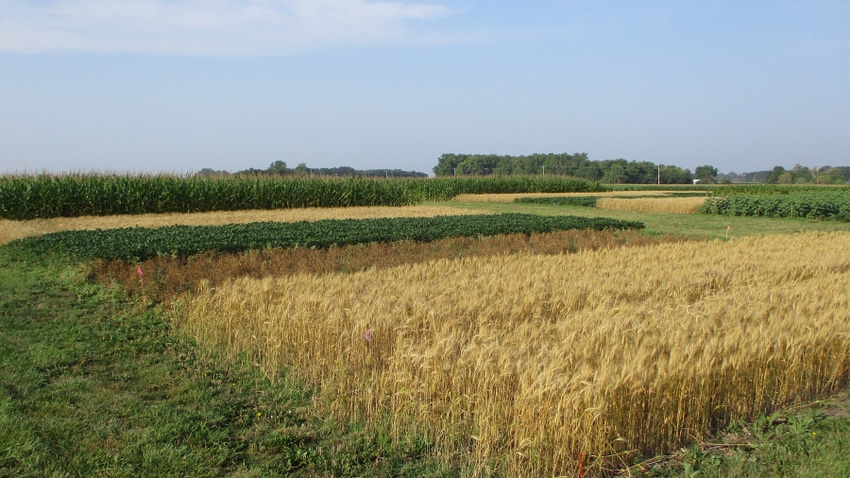May 24, 2023

Decades of research into crop rotations has found four-year rotations advantageous over two-year ones, according to the North Central Agriculture Research Lab near Brookings, S.D., part of the USDA Agricultural Research Service.
ARS agronomist Shannon Osborne says the four-year rotations included combinations of corn, soybeans, spring wheat, winter wheat oats, field peas and sunflowers. All plots were managed with no-till practices.
“We initially started seeing improvements in soybean yields,” Osborne says. After five to six years, soybean yields improved up to 25% when grown in rotation following a small-grain crop instead of corn, she says.
Over time, researchers also began to see increased corn yields when grown in rotation with other crops. “After we’ve been in that rotation for at least 12 years to 16 years, we’re seeing improved corn yields when corn is grown in a rotation with winter wheat and peas, especially when corn is going in right after that pea crop,” she explains.
Having over 20 years of data lets researchers draw better conclusions than possible in a shorter-term experiment. One conclusion, according to Osborne, is that a four-year rotation can be as productive in total yield as a corn-soybean rotation while being less susceptible to weather extremes.
“That four-year rotation is less environmentally risky,” Osborne said. “It’s just as productive, but it’s a lot more stable to changes in environmental conditions, which is kind of what we’re seeing the last few years. We have these ups and downs in weather and temperature and rainfall.”
Researchers worked with economists at South Dakota State University to evaluate the economics of different rotations, including crop prices and production costs. It was found that some four-year rotations have a higher benefit-to-cost ratio. Osborne says this occurs due to lower input cost for rotations that include two legumes, which add nitrogen to the soil.
More biological activity, less erosion
“We’re seeing when we have a diversified rotation versus a two-year rotation, we have an increase in short-term carbon mineralization,” Osborne says. “So that’s indicative of more microbial activity — more things happening in that soil being more active in that four-year rotation compared to the two-year corn-soybean rotation.”
The increased biological activity leads to healthier, more stable soil that offers more efficient nutrient cycling and reduced erosion.
In four-year rotations, “you get more soils that are in larger aggregates, or more stable aggregates that are less susceptible to wind erosion,” Osborne says. In the two-year corn and soybean rotations, “those aggregates are less stable, and they are more highly erodible, leading to them being more susceptible to wind and water erosion.”
Other benefits found in these diverse rotations include:
more carbon buildup
increased soil organic matter
better water filtration and storage capacity
better plant resilience during droughts
Choosing a rotation
Producers thinking about adding diversity to their crop rotations will have to think carefully about the needs of their individual operations and resources available to them.
“The best rotation is kind of dependent upon your production system — what you have going on, what kind of your circumstances are,” Osborne explains. “If you’re a producer who is wanting to look at lower fertilizer costs, those rotations where we have corn, soybeans, a small grain and a pea are very beneficial when you have those two legumes in there because they are providing more nitrogen. If you’re just wanting to get more root growth, more roots there all the time, greater soybean yields, the ones with the winter wheat and especially where you have oats in that rotation.”
The ability to either market or make use of each crop in the rotation will also affect producers’ decisions, she says. She says a corn, oats, winter wheat, and soybean rotation would be an easy rotation for many producers to adopt at first.
For questions about the rotation research, contact Osborne at [email protected] or 605-693-5234. To learn more about soil health and benefits of biodiversity, visit sdsoilhealthcoalition.org.
Source: South Dakota Soil Health Coalition
You May Also Like




